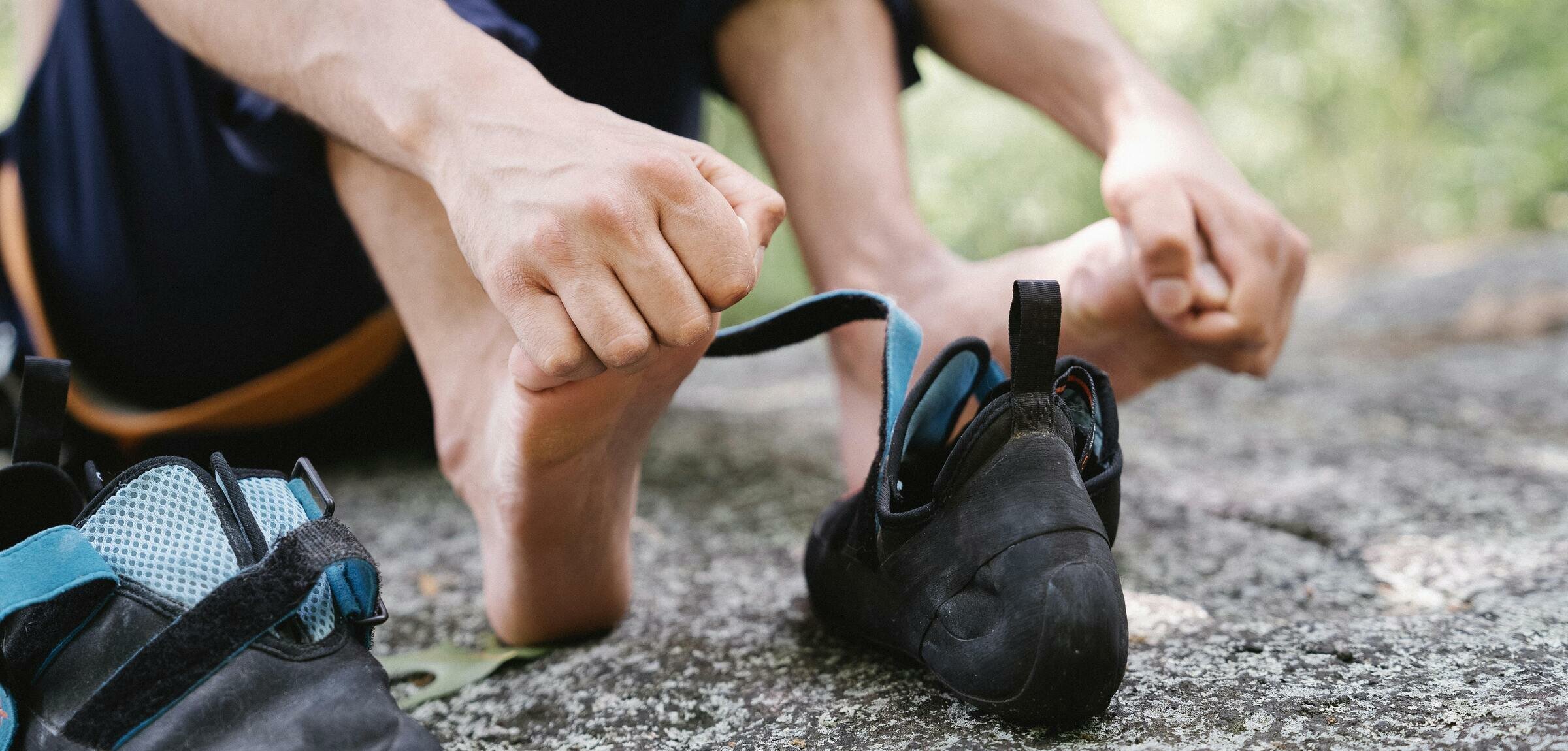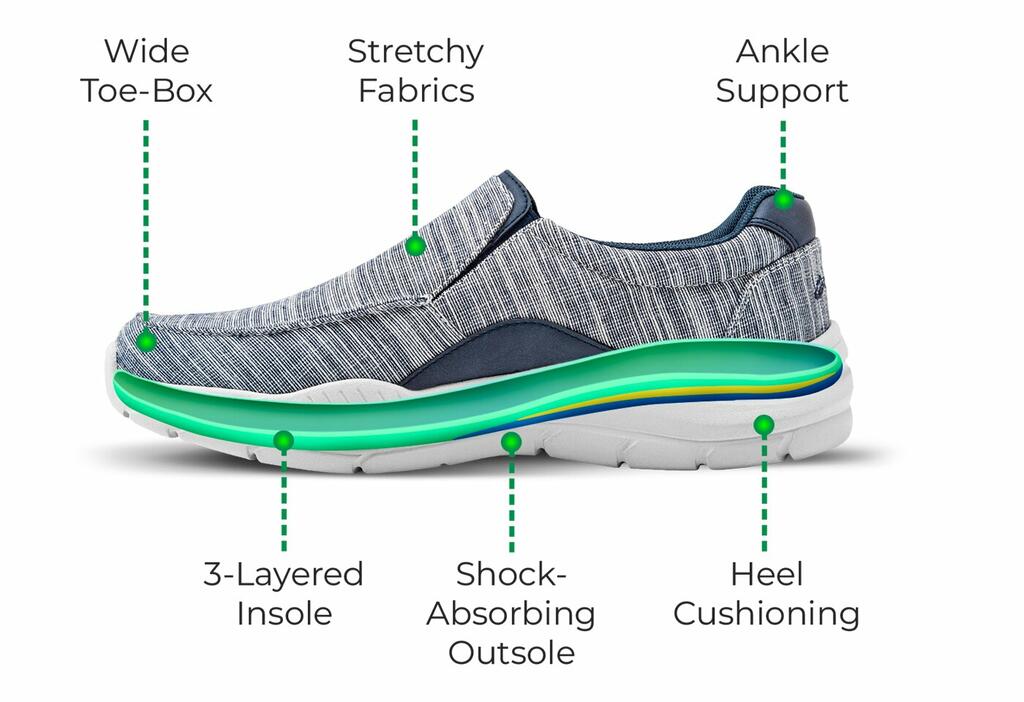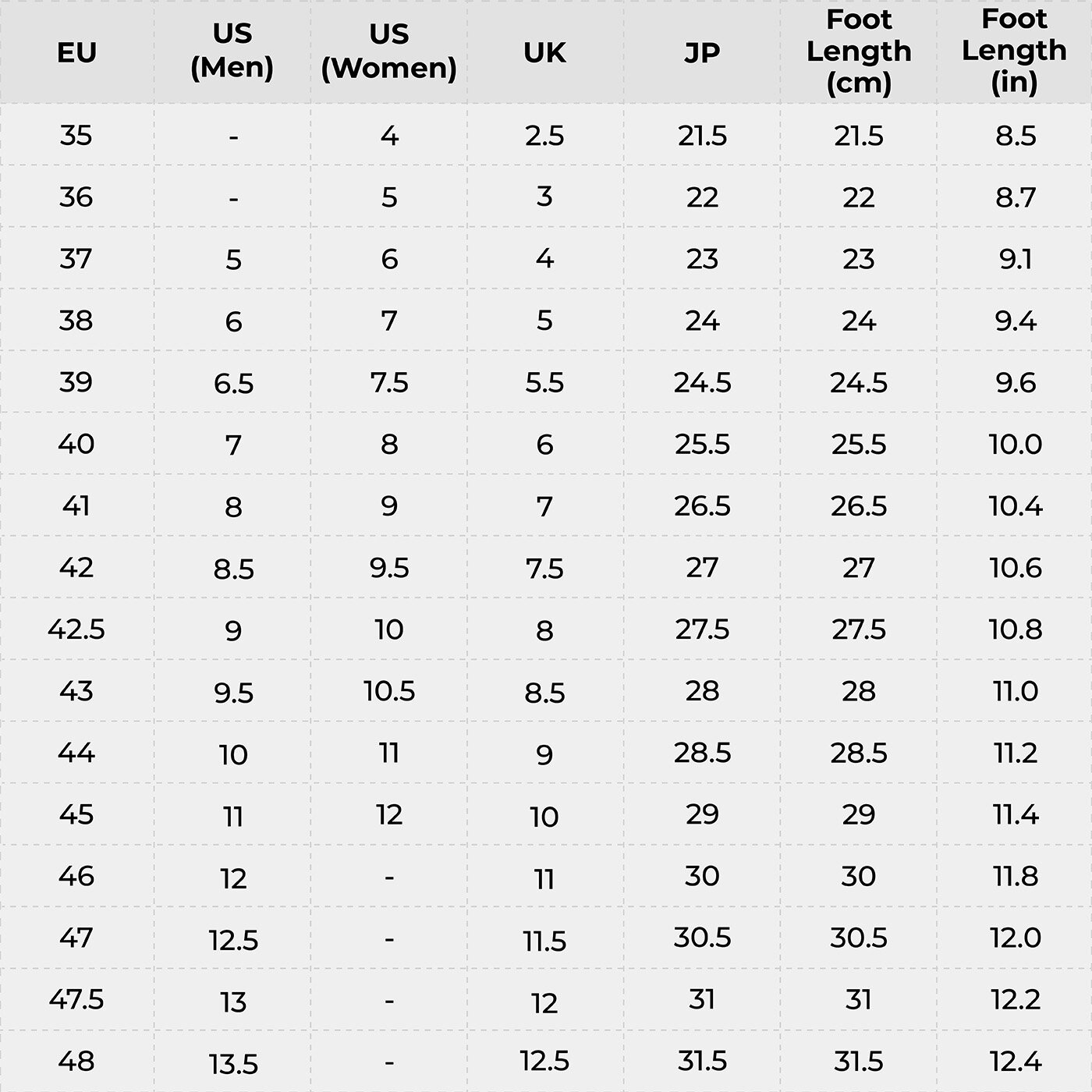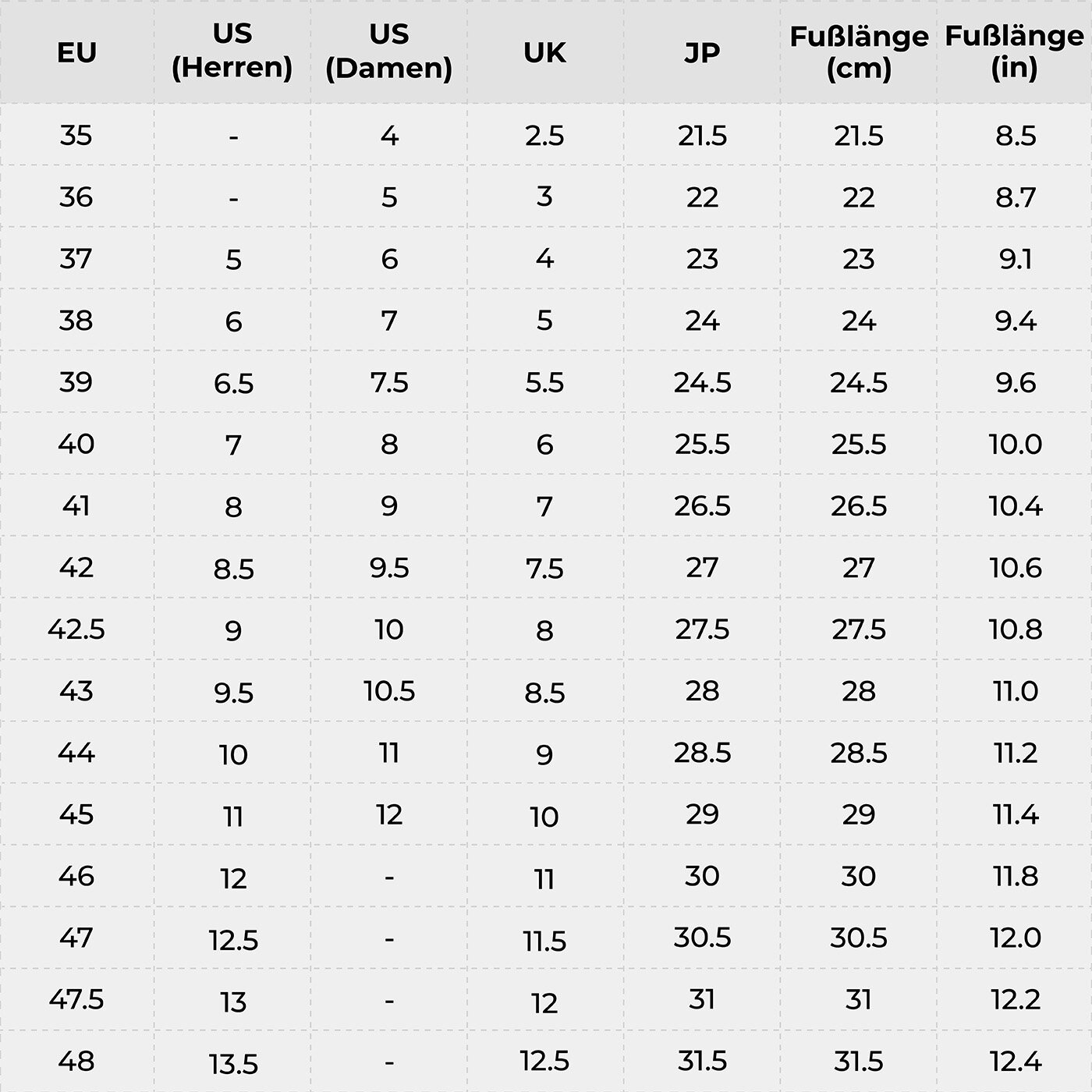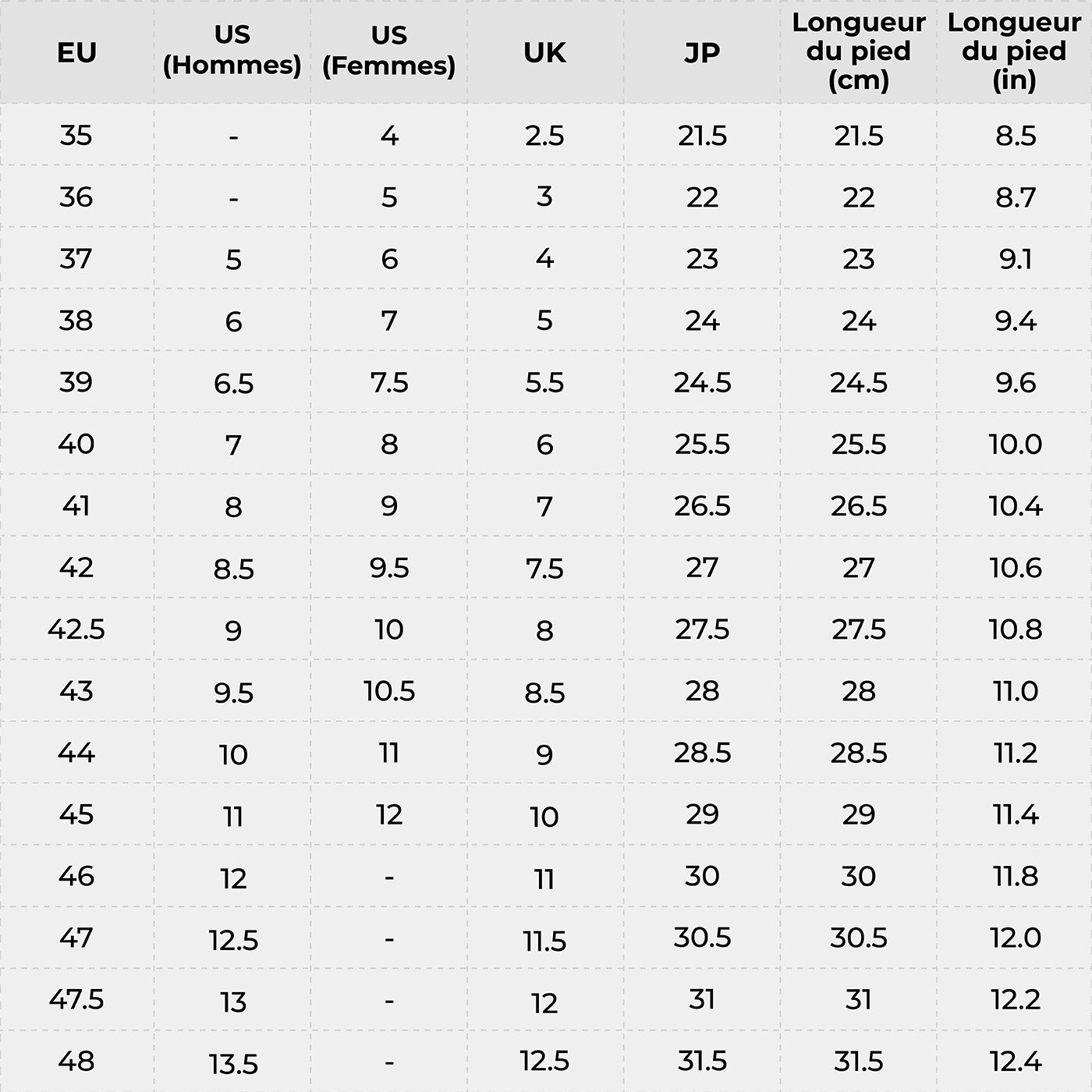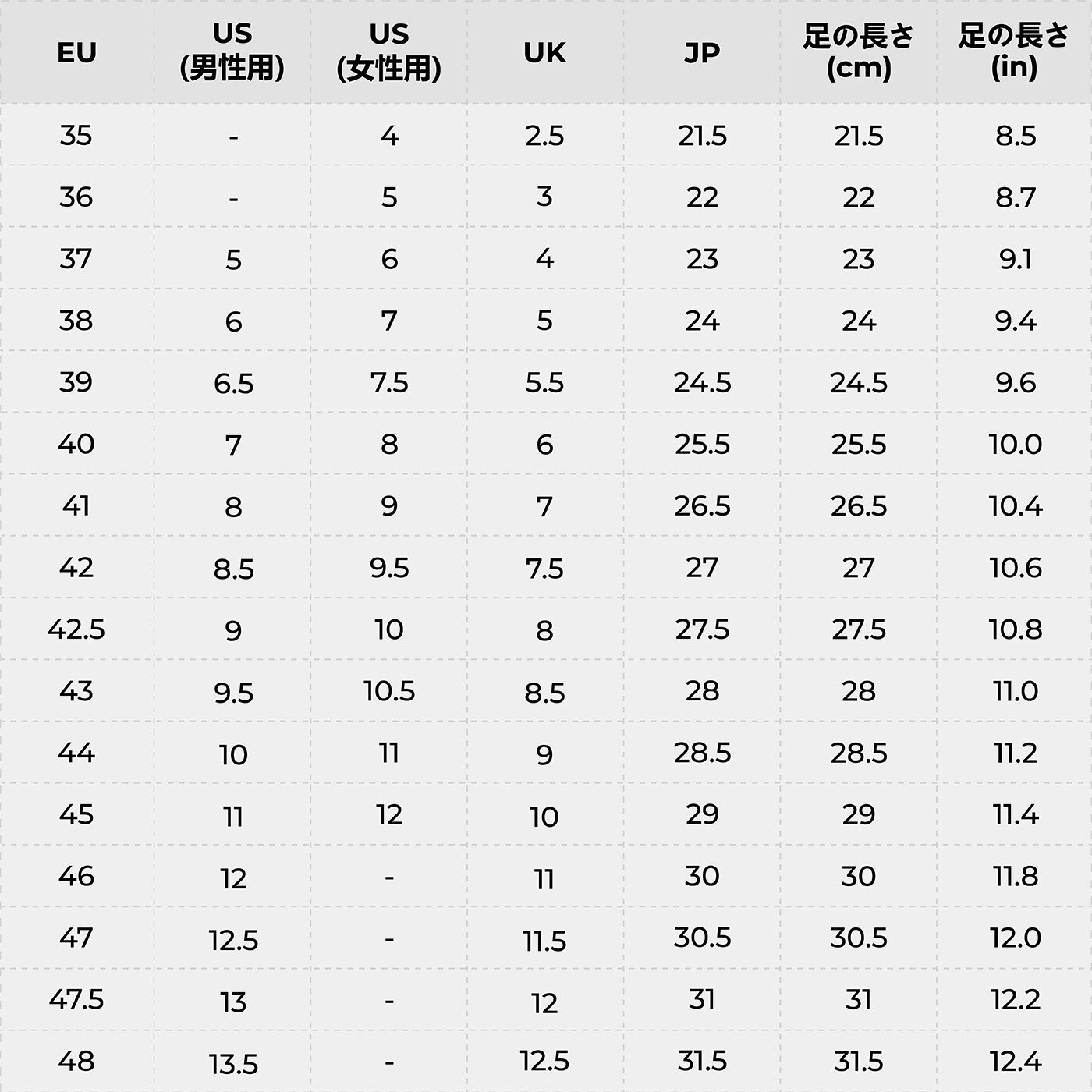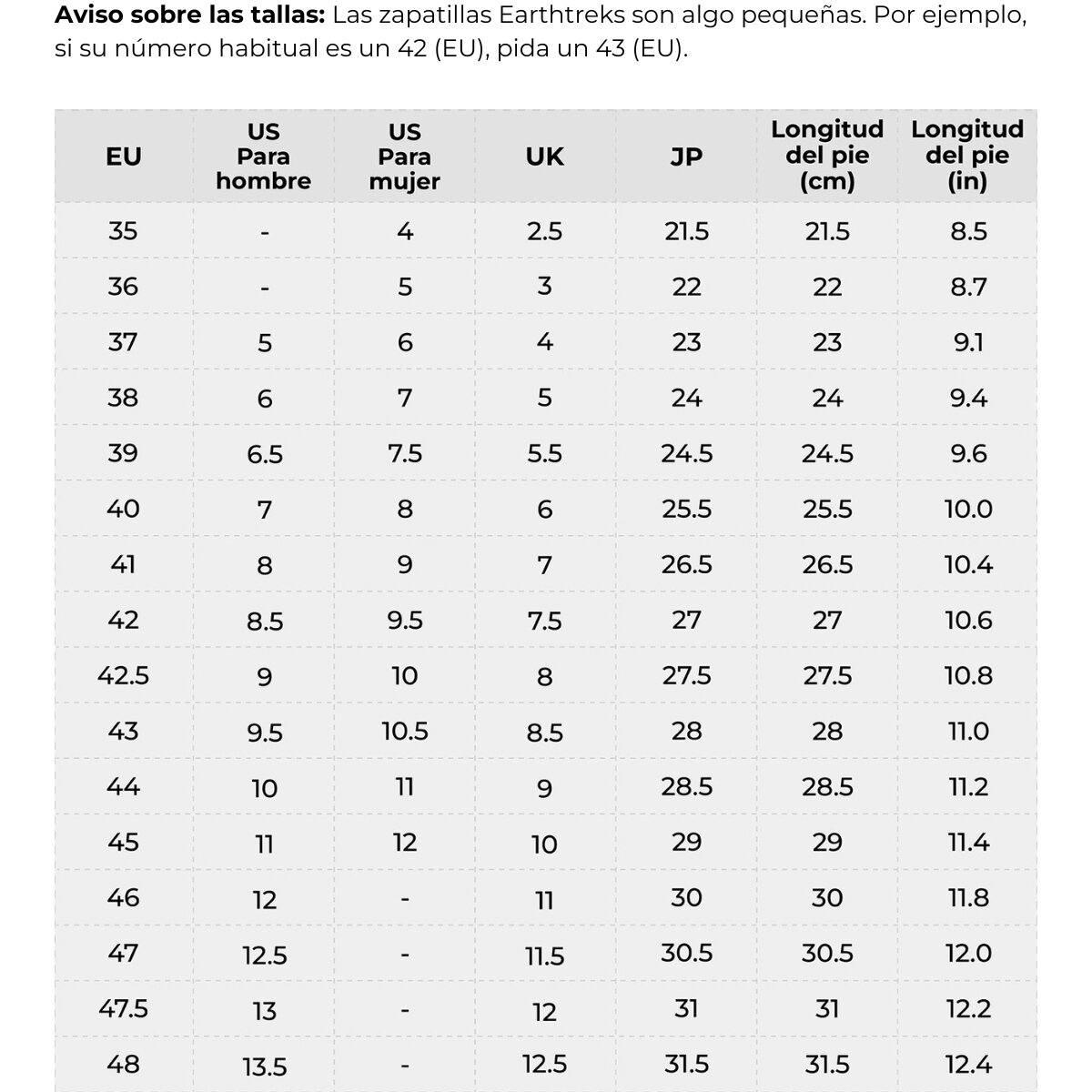Orthopedic Shoes: Your Key to Avoiding Long-Term Foot Pain
Foot health is an essential aspect of overall well-being, yet it’s often neglected until pain arises. Long-term foot pain can significantly impact your daily life, restricting mobility and diminishing quality of life.
Fortunately, advancements in footwear technology have led to the development of orthopedic shoes, a solution designed to prevent and alleviate foot pain. In this article, we’ll explore the world of orthopedic shoes and how they can help you maintain healthy feet.
Understanding Foot Pain
Sadly, foot pain is a widespread issue that affects millions of people worldwide. It can stem from a variety of conditions, each with its unique causes and symptoms. To fully appreciate the role of orthopedic shoes in preventing and alleviating foot pain, it’s essential to delve into some common foot problems and their origins.
- Plantar Fasciitis: This condition is characterized by sharp pain in the bottom of the foot, especially near the heel. It’s caused by inflammation of the plantar fascia, a thick band of tissue that runs across the bottom of your foot and connects your heel bone to your toes. Factors contributing to plantar fasciitis include excessive running, overweight, and wearing shoes with inadequate support.
- Bunions: A bunion is a bony bump that forms on the joint at the base of your big toe. It occurs when some of the bones in the front part of your foot move out of place, causing the tip of your big toe to get pulled toward the smaller toes and forcing the joint at the base of your big toe to stick out. Wearing tight, narrow shoes might cause bunions or make them worse.
- Arthritis: Arthritis can affect various joints in the foot, leading to pain and stiffness. Osteoarthritis, rheumatoid arthritis, and gout are among the types that commonly affect the feet. These conditions result from the wear and tear of cartilage, autoimmune responses, or high levels of uric acid, respectively.
- Diabetic Neuropathy: Diabetes can cause a type of nerve damage known as diabetic neuropathy. This condition can lead to a loss of feeling in the feet, making it difficult to perceive injuries. Additionally, diabetic individuals are at an increased risk of foot ulcers and infections due to poor circulation.
- Ingrown Toenails: While seemingly minor, ingrown toenails can cause significant pain and discomfort. They occur when the edge of a toenail grows into the flesh of the toe, which can lead to infection. Improper nail trimming, tight footwear, and toe injuries are common culprits.
- Achilles Tendinitis: This condition involves the inflammation of the Achilles tendon, the band of tissue that connects calf muscles at the back of the lower leg to your heel bone. It’s often a result of repetitive stress to the tendon, not allowing it to fully recover, especially among runners and athletes.
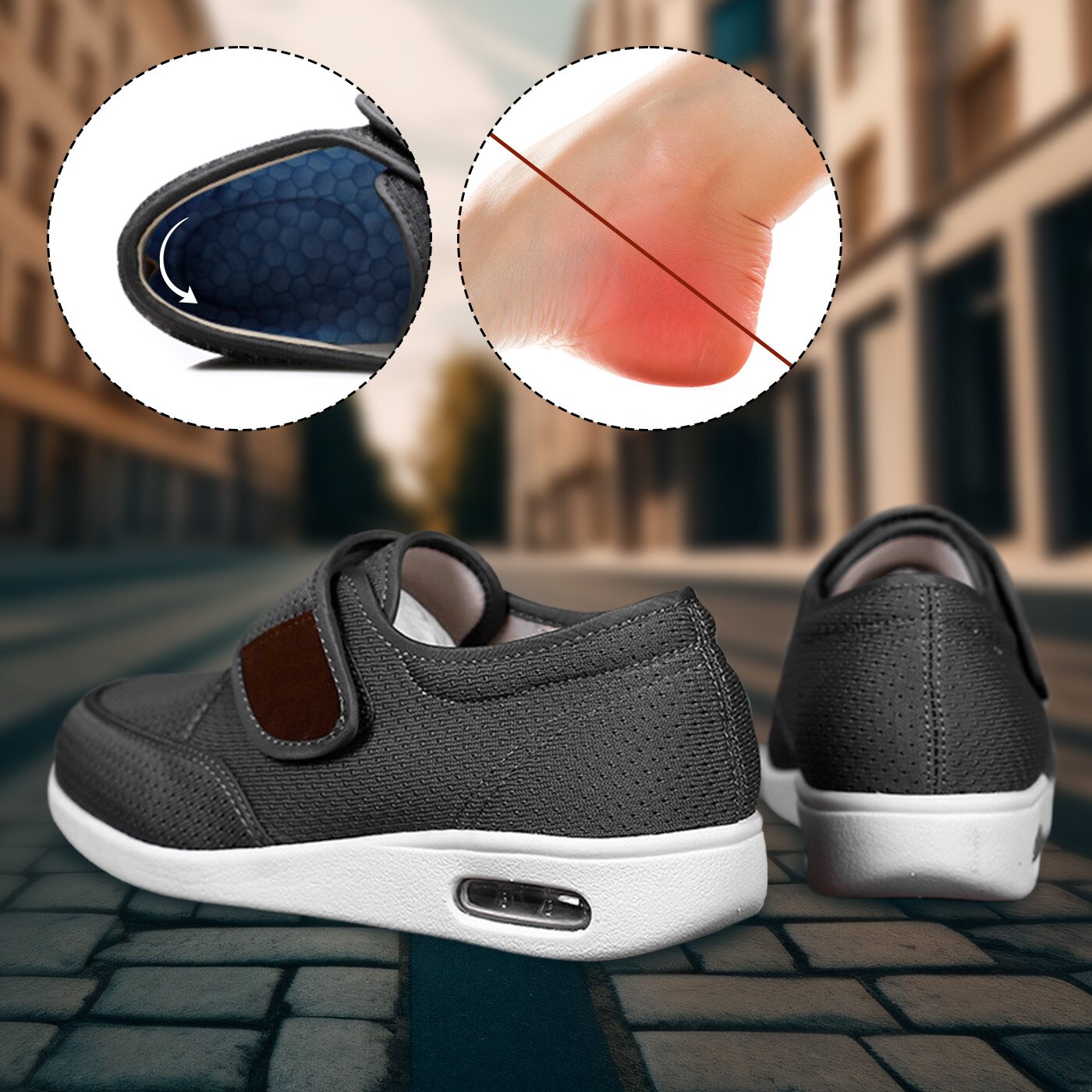

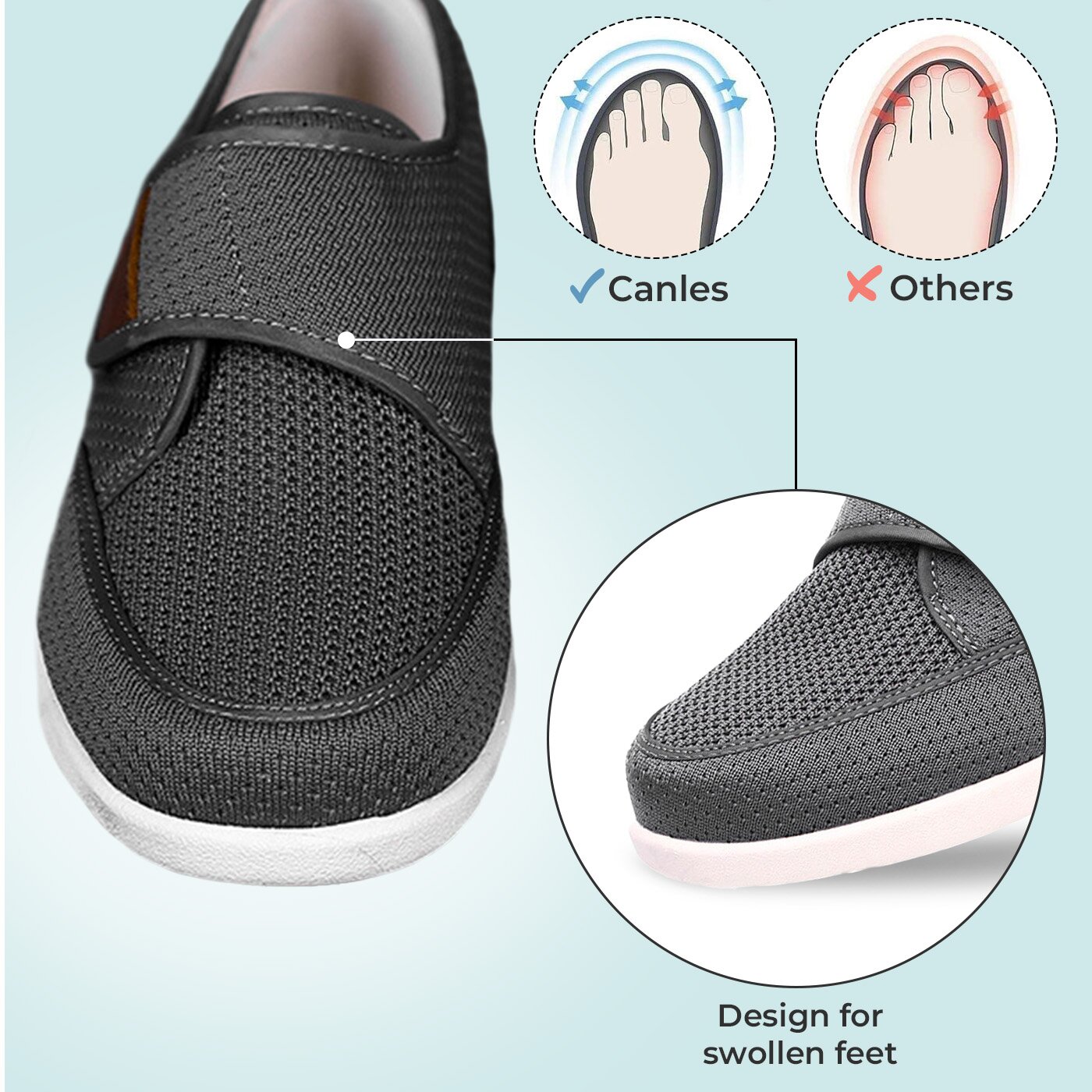
The Role of Orthopedic Shoes in
Preventing Foot Pain
Orthopedic shoes play a pivotal role in the prevention and management of foot pain by offering design features specifically aimed at addressing the underlying causes of discomfort. These shoes are engineered with a focus on providing superior arch support, which is crucial for distributing pressure evenly across the foot, thereby reducing the strain on any single point, such as the heel or ball of the foot.
The enhanced cushioning found in orthopedic shoes absorbs shock with every step, mitigating the impact on the joints and soft tissues of the feet. This is particularly beneficial for individuals suffering from conditions like plantar fasciitis or arthritis, where reducing mechanical stress on the foot can significantly alleviate pain.
Moreover, the spacious toe box design in many orthopedic shoes helps prevent the formation of bunions and hammertoes by allowing the toes to spread naturally without constriction.
Beyond the physical structure, orthopedic shoes often feature materials that are both durable and breathable, creating a healthy environment for the feet that can prevent issues like athlete’s foot and other fungal infections.
The inclusion of removable insoles and adjustable straps or laces allows for a customized fit that can accommodate changes in foot size or shape due to swelling, a common issue for many foot-related ailments.
For individuals with diabetes, orthopedic shoes are instrumental in preventing complications by providing the necessary protection against foot injuries and enhancing circulation through a proper fit, reducing the risk of diabetic foot ulcers.
The Science and Technology Behind Orthopedic Shoes
The design and manufacturing of orthopedic shoes have benefited greatly from advancements in science and technology. Here’s how modern innovations contribute to their effectiveness:
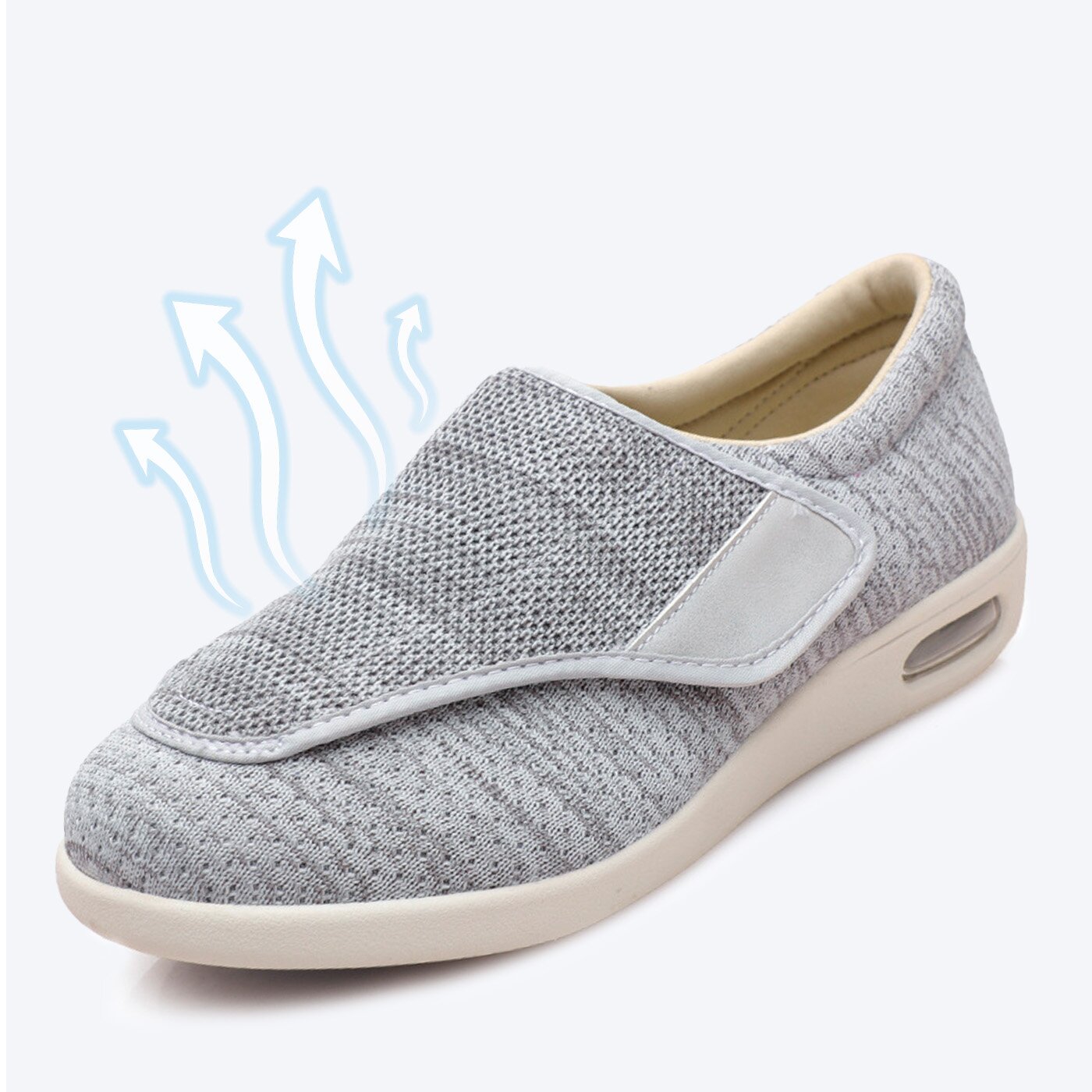
Advanced Materials:

Customizable Insoles:

3D Printing:

Smart Technology:
Incorporating Orthopedic Shoes
into Your Lifestyle
Making the transition to orthopedic shoes can seem daunting at first, especially if you’re concerned about how they will fit into your everyday style. But worry not, we have put together an easy guide on how to incorporate orthopedic shoes into your daily life.
Step 1: Assess Your Needs
First of all, you should consider the types of activities you engage in daily, such as work, exercise, or casual outings. Then, focus on any specific foot conditions you have, like flat feet or plantar fasciitis, to determine the support your shoes should provide.
Step 2: Select Your Shoes
Pick a couple of pairs that cover most of your activities – one for everyday wear and another for physical activities. Always try to look for shoes that match your personal style while offering the necessary support and comfort. For example, Canles has an excellent selection of orthopedic shoes you can check out.
Step 3: Ensure a Proper Fit
Keep in mind that feet can swell during the day, so trying on shoes in the late afternoon or evening can help you find the best fit. After that, wear the shoes around the house to ensure they’re comfortable and don’t cause any irritation or discomfort.
Step 4: Gradual Transition
Begin by wearing your orthopedic shoes for a few hours each day and gradually increase the duration as your feet adjust. While doing that, pay attention to how your feet feel and adjust the wearing schedule if you experience discomfort.
Step 5: Care and Maintenance
Use the manufacturer’s guidelines to clean and maintain your shoes, keeping them in good condition. Make sure you also check your orthopedic shoes regularly for signs of wear and replace them as needed to ensure your feet are well-supported.
Step 6: Monitor and Adjust
Just like with any regular pair of shoes, you should assess whether your orthopedic shoes continue to meet your needs in terms of comfort and support. As your lifestyle or foot conditions change, be prepared to adjust your choice of orthopedic shoes accordingly.
By following these steps, you’ll find that incorporating orthopedic shoes into your lifestyle is not only manageable but can also be a stylish and comfortable choice that significantly benefits your foot health and overall well-being.

Alternative Foot Pain Prevention Methods
In addition to embracing orthopedic shoes, several other strategies can play a crucial role in preventing foot pain. Here are some effective methods to consider:
- Foot Exercises: Strengthen and stretch your feet regularly to improve flexibility and strength. Exercises like toe curls, heel raises, and ankle rotations can be beneficial.
- Proper Rest: Give your feet adequate rest, especially after long periods of standing or walking. Elevating your feet can help reduce swelling and fatigue.
- Orthotic Inserts: For those not ready to transition to orthopedic shoes, using orthotic inserts in regular footwear can provide additional support and cushioning.
- Proper Foot Hygiene: Keep your feet clean and dry to prevent fungal infections. Use foot powder if necessary and choose socks that wick away moisture.
- Wear the Right Shoes for Activities: Ensure you wear activity-appropriate shoes that provide the necessary support and protection, whether you’re running, hiking, or playing sports.
- Limit High Heels: Reduce the frequency and duration of high heel wear to minimize pressure on the front of your feet and prevent conditions like bunions and hammertoes.
- Maintain a Healthy Weight: Excess weight can increase the pressure and stress on your feet, leading to pain and discomfort. Striving for a healthy weight can alleviate this pressure.
- Stay Hydrated: Adequate hydration can help prevent cramps and promote overall foot health. Ensure you’re drinking enough water throughout the day.
- Regular Foot Checks: Regularly inspect your feet for any signs of injury, infection, or abnormal changes, especially if you have diabetes. Early detection can prevent complications.
- Consult a Podiatrist: Regular visits to a podiatrist can help catch potential issues early and provide personalized advice on foot care and the selection of footwear.




★★★★★ (1042)
Canles Caldon Sliders
$69.99

